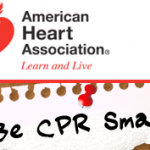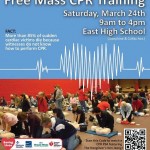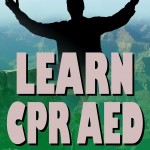Stress Testing
What Is Stress Testing?
Stress testing provides your doctor with information about how your heart works during physical stress. Some heart problems are easier to diagnose when your heart is working hard and beating fast. During a stress test, you exercise (walk or run on a treadmill or pedal a bicycle) or are given a medicine to make your heart work harder while heart tests are performed. During these tests, your heart is monitored using images or through dime-sized electrodes attached to your chest, arms, or legs. You may be asked to breathe into a special tube during the test. This will allow your doctor to see how well you’re breathing.
You may have arthritis or another medical problem that prevents you from exercising during a stress test. If so, your doctor can give you a medicine that makes your heart work harder, as it would if you were exercising. This is called a pharmacological (FAR-ma-ko-LOJ-i-kal) stress test.
Overview
Doctors usually use stress testing to help diagnose coronary artery disease (CAD) or to see how serious this disease is in those who are known to have it. It’s sometimes used to assess other problems such as heart valve abnormalities or heart failure.
CAD occurs when the arteries that supply blood to the heart muscle (the coronary arteries) become hardened and narrowed with a material called plaque (plak). Plaque is made up of fat, cholesterol, calcium, and other substances found in the blood. Plaque builds up on the insides of the arteries, narrowing them and restricting blood flow to your heart. You may not have any signs or symptoms of CAD when your heart is at rest. But when your heart has to work harder during exercise, it needs more blood and oxygen, and narrowed arteries aren’t able to supply enough blood for your heart to work well. Thus, the signs and symptoms may occur only during exercise.
A stress test can detect the following indications that your heart may not be getting enough blood during exercise.
- Abnormal changes in your heart rate or blood pressure
- Symptoms such as shortness of breath or chest pain
- Abnormal changes in your heart rhythm or the electrical activity of your heart
During the stress test, if you can’t exercise for as long as what’s considered normal for someone your age, it may be a sign that not enough blood is flowing to your heart. But other factors besides CAD can prevent you from exercising long enough (for example, lung diseases, anemia, or poor general fitness).
Stress Testing Using Imaging
Some stress tests take pictures of the heart when you exercise and when you’re at rest. These imaging stress tests can show how well blood is flowing in the different parts of your heart and/or how well your heart squeezes out blood when it beats.
One type of imaging stress test involves echocardiography, which is a test that uses sound waves to create a moving picture of your heart. An echocardiogram stress test can show how well your heart’s chambers and valves are working when your heart is under stress. The test can identify areas of poor blood flow to your heart, dead heart muscle tissue, and areas of the heart muscle wall that aren’t contracting normally. These areas may have been damaged during a heart attack or may be getting too little blood.
Other imaging stress tests use a radioactive dye to create images of the blood flow to your heart. The dye is injected into your bloodstream before pictures are taken of your heart. The pictures show how much of the dye has reached various parts of your heart during exercise and at rest.
Tests that use a radioactive dye include a thallium or sestamibi stress test and a positron emission tomography (PET) stress test. The amount of radiation in the dye is safe and not a danger to you or those around you. However, if you’re pregnant, you shouldn’t have this test because of risks it might pose to your unborn child.
Some doctors may use magnetic resonance imaging (MRI) to take pictures of the heart when it’s working hard. This test doesn’t use a radioactive dye or sound waves. Instead, it uses radio waves and magnetic fields to create images that show blood flow in the heart and whether all parts of the heart wall are contracting strongly.
Imaging stress tests tend to be more accurate at detecting CAD than standard (nonimaging) stress tests. An imaging stress test may be done first if you:
- Can’t exercise for enough time to get your heart working its hardest. (Medical problems, such as arthritis or leg arteries clogged by plaque, may prevent you from exercising enough.)
- Have abnormal heartbeats or other problems that will cause a standard exercise stress test to be inaccurate.
- Are a woman. Standard stress tests are less accurate in women than in men. If you’re a woman and live far from a testing facility, your doctor may want you to skip a standard stress test and get an imaging stress test instead. That way, you don’t have to make a second trip for the imaging stress test if there are any questions about the results from the standard stress test.
September 2007












